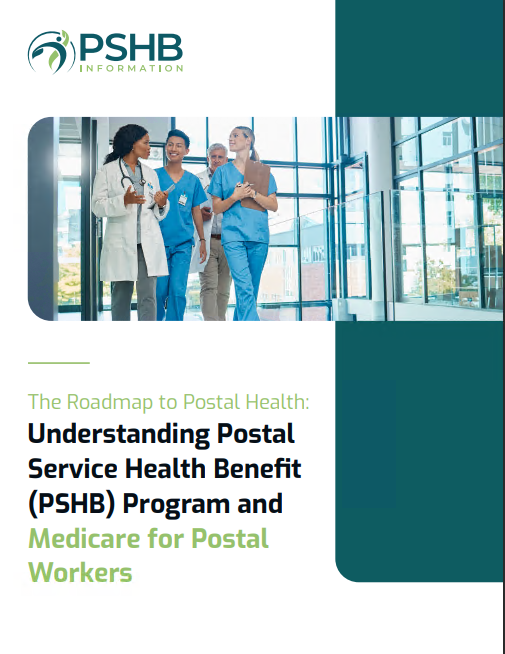Key Takeaways
-
Choosing a Medicare Part C plan can provide comprehensive healthcare coverage, but it requires careful evaluation of your healthcare needs and benefits.
-
Understanding costs, coverage options, and provider networks is essential to making the right decision for your health and finances.
Why Consider Medicare Part C?
Medicare Part C, also known as Medicare Advantage, combines the benefits of Original Medicare with additional features such as vision, dental, and prescription drug coverage. For postal workers and annuitants transitioning to PSHB, these plans may seem appealing, but understanding their nuances is crucial.
Know What Medicare Part C Offers
Medicare Part C plans are provided by private insurance companies and approved by Medicare. These plans must cover at least the same benefits as Original Medicare (Parts A and B), but they often go further by offering:
-
Routine vision, dental, and hearing care.
-
Prescription drug coverage.
-
Fitness and wellness programs.
These added benefits can make Medicare Part C an attractive option for those looking to streamline their healthcare.
Evaluate the Costs
Costs for Medicare Part C plans vary widely depending on the plan and the region. When assessing these plans, consider the following:
-
Monthly Premiums: While some plans have low premiums, remember to account for your Part B premium.
-
Deductibles: Review the annual deductible and how it applies to different services.
-
Copayments and Coinsurance: These costs can add up, especially for specialist visits or hospital stays.
-
Out-of-Pocket Maximums: One significant advantage of Medicare Part C is the annual cap on out-of-pocket expenses. For 2025, the maximum is $9,350 for in-network services.
Ensure Your Providers Are In-Network
Medicare Advantage plans operate through provider networks, which can be HMO (Health Maintenance Organization) or PPO (Preferred Provider Organization) structures. If you’re accustomed to seeing specific doctors or specialists, confirm they are part of the plan’s network. Otherwise, you may face higher costs or have to switch providers.
-
HMO Plans: Require you to choose a primary care physician and get referrals for specialists. Out-of-network care is usually not covered except in emergencies.
-
PPO Plans: Offer more flexibility to see out-of-network providers but often at a higher cost.
Prescription Drug Coverage
Most Medicare Part C plans include prescription drug coverage, which can save you the hassle of enrolling in a separate Part D plan. However, ensure the medications you take regularly are covered under the plan’s formulary. Formularies can differ significantly between plans, so check for restrictions like prior authorization or quantity limits.
Additional Benefits to Watch For
Medicare Part C plans often provide benefits beyond Original Medicare. Evaluate these carefully:
-
Dental Coverage: This might include cleanings, X-rays, or even restorative care.
-
Vision Benefits: Many plans offer annual eye exams and allowances for glasses or contact lenses.
-
Hearing Care: Coverage may include exams and discounts on hearing aids.
-
Wellness Programs: Fitness memberships and health coaching services can help you stay active.
Understand Plan Limitations
While Medicare Part C plans offer extensive benefits, there are some limitations to be aware of:
-
Service Areas: Plans are regional, so coverage may not extend beyond your local area unless it’s for emergency care.
-
Out-of-Network Costs: For PPO plans, out-of-network providers generally cost more. HMO plans typically won’t cover out-of-network care at all.
-
Plan Changes: Benefits and costs can change annually. Review your plan during the Medicare Open Enrollment period from October 15 to December 7 to ensure it continues to meet your needs.
How Medicare Part C Fits with PSHB
For postal workers and retirees, the introduction of the PSHB program in 2025 aligns health benefits with Medicare. If you’re Medicare-eligible and enrolled in a PSHB plan, you may find that certain Medicare Part C options enhance your overall coverage.
-
Medicare Integration: PSHB plans often include features that work seamlessly with Medicare, such as waived deductibles and reduced out-of-pocket costs for prescription drugs.
-
Mandatory Enrollment in Part B: To maintain PSHB coverage, you must be enrolled in Medicare Part B, which pairs well with many Medicare Part C plans.
Tips for Comparing Plans
When choosing a Medicare Part C plan, take the following steps:
-
List Your Healthcare Needs: Include current providers, prescription drugs, and any ongoing treatments.
-
Compare Costs: Consider premiums, deductibles, copayments, and the out-of-pocket maximum.
-
Check Provider Networks: Verify that your preferred doctors and hospitals are in-network.
-
Review Extra Benefits: Assess the value of additional features like dental, vision, and wellness programs.
-
Read the Fine Print: Understand coverage rules, restrictions, and annual changes to the plan.
Timing Is Key
The timing of your enrollment can impact your options:
-
Medicare Initial Enrollment Period (IEP): Enroll in Medicare Parts A, B, and C during your IEP, which begins three months before your 65th birthday and ends three months after.
-
Medicare Open Enrollment Period: From October 15 to December 7 each year, you can join, switch, or drop a Medicare Part C plan. Changes take effect on January 1.
-
Special Enrollment Periods (SEPs): Certain life events, like moving or losing employer coverage, may qualify you for an SEP.
Your Health and Budget Matter Most
Ultimately, the best Medicare Part C plan is the one that aligns with your health needs and financial situation. Take time to review your options carefully, and don’t hesitate to ask questions or seek guidance if needed. Whether you’re new to Medicare or reevaluating your coverage, understanding these plans will help you make an informed decision.
Make Your Health a Priority in 2025
With the changes in Medicare and the introduction of PSHB, this year is the perfect time to reassess your healthcare coverage. By understanding what Medicare Part C offers and how it fits with your needs, you’ll be well-prepared to make a choice that supports your health and finances.






